All you need to know about spinach, plus 3 recipes
Sign up now: Get ST's newsletters delivered to your inbox
Follow topic:
MALAYSIA (THE STAR / ANN) - There is a lot to like about spinach. An annual plant native to central and South-west Asia, it is a nutritional powerhouse, like many other leafy greens. Its leaves are very tender when cooked and crunchy-fresh when used raw, with a hint of cleansing astringent bitterness.
It is believed to have originated from ancient Persia (Iran today), and found itself entering China by way of Nepal. Even today, China is the largest grower of spinach in the world, accounting for over 90 per cent of the world's spinach haul.
The United States is the world's second-largest spinach producer, which may explain why the country celebrated National Spinach Day on March 26.
By the 12th century, spinach had become pretty popular in Europe, gaining a reputation as a healthy vegetable. In the 16th century, Florence-born Catherine de Medici - the Queen of France from 1547 to 1559 and the wife of King Henry II - was said to be very fond of the vegetable, even introducing it to her court. It is an unverified legend, but it is said that is why dishes called "Florentine" are always served on a bed of spinach (along with a creamy sauce).
Spinach's scientific name is Spinacia oleracea, and it belongs to the Amaranthaceae family. There are three types: savoy, which is a dark green with curly leaves, usually sold fresh; flat leaf, which has broad, smooth leaves and which is usually the kind you will find processed; semi-savoy, is a hybrid, which you can get both fresh and processed.
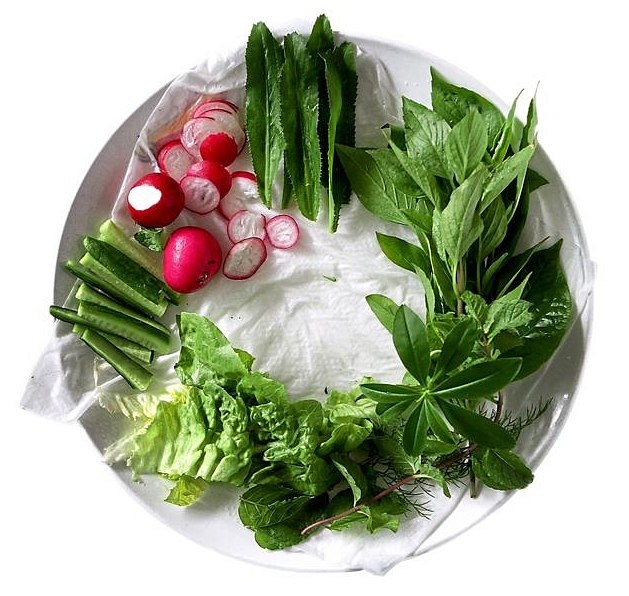
Spinach is a good source of non-heme iron (the kind you get from vegetables), but you need to cook it to break down the oxalates that will inhibit your body from absorbing it (more on oxalates later).
So a cup of cooked spinach contains about 6.5mg of iron. And if you also eat meat, fish or poultry, fruits like oranges or strawberries, or vegetables like tomatoes and broccoli, your iron absorption will go up.
"Spinach is a great source of water-soluble vitamins (B and C), fat-soluble vitamins (A, E and K), minerals (iron, magnesium, potassium, manganese, etc) and a good source of fibre," says nutritionist Alexandra Prabaharan.
"I'd certainly recommend it as part of a healthy diet."
Those water-soluble vitamins are also the reason that you want to avoid long, high-heat cooking - which could destroy those nutrients. So aim to steam, or quickly sauté.
"It is a vegetable that is easy to add into many dishes without worrying about the flavour interfering in the overall meal," said Ms Prabaharan.
"Chop it up and add it into your smoothies, pasta sauces, salads, soups, stir-fries or even mix it in with burger patties or meatballs for kids. This helps to hide the spinach, while ensuring they still eat it."
Choose crisp, dark green leaves and don't rinse before storing. Definitely rinse well before cooking though, as soil and sand have a tendency to cling to leaves, and can result in a nasty surprise.
Well then.
That is spinach in a nutshell, but there are a host of other plants - some from the same family, others completely unrelated - that also at least partly bear the moniker. And most Malaysians would be very familiar with bayam already, although perhaps less so with Brazilian or Surinam spinach.
Leafy green vegetables like spinach, they also tend to be founts of nutrients in similar fashion, although there is less research than compared to their more established cousin. Ms Prabaharan still recommends them as part of a healthy diet.
And unlike spinach itself - which likes more sub-tropical climates - some of them grow very well in the heat and humidity of Malaysia.
According to Shao-Lyn Low from urban permaculturists Eats, Shoots and Roots, Surinam, Malabar and Brazilian spinach are all easy to grow at home, even for beginners.
"Surinam and Brazilian spinach are both grown from cuttings, which are also easier to get. You just pick their leaves and then trim them down and they will continue to grow," she said. "Malabar spinach is grown from seed."
"I think the easiest to grow and cultivate would be Surinam - it seems to be attacked by the least pests - then Brazilian. For Malabar spinach, you also need a trellis, because it's a vine."
Read on to find out more about the fake spinaches which should be a very real part of your kitchen rituals, then enjoy some recipes in which they take starring roles, from chef Jean Michel Fraisse of The French Culinary School in Asia. The spinach choice for those aren't carved in stone, so you can mix and match to find what works for you - or what is available.
Malabar spinach
(Basella alba, Basella ruba)
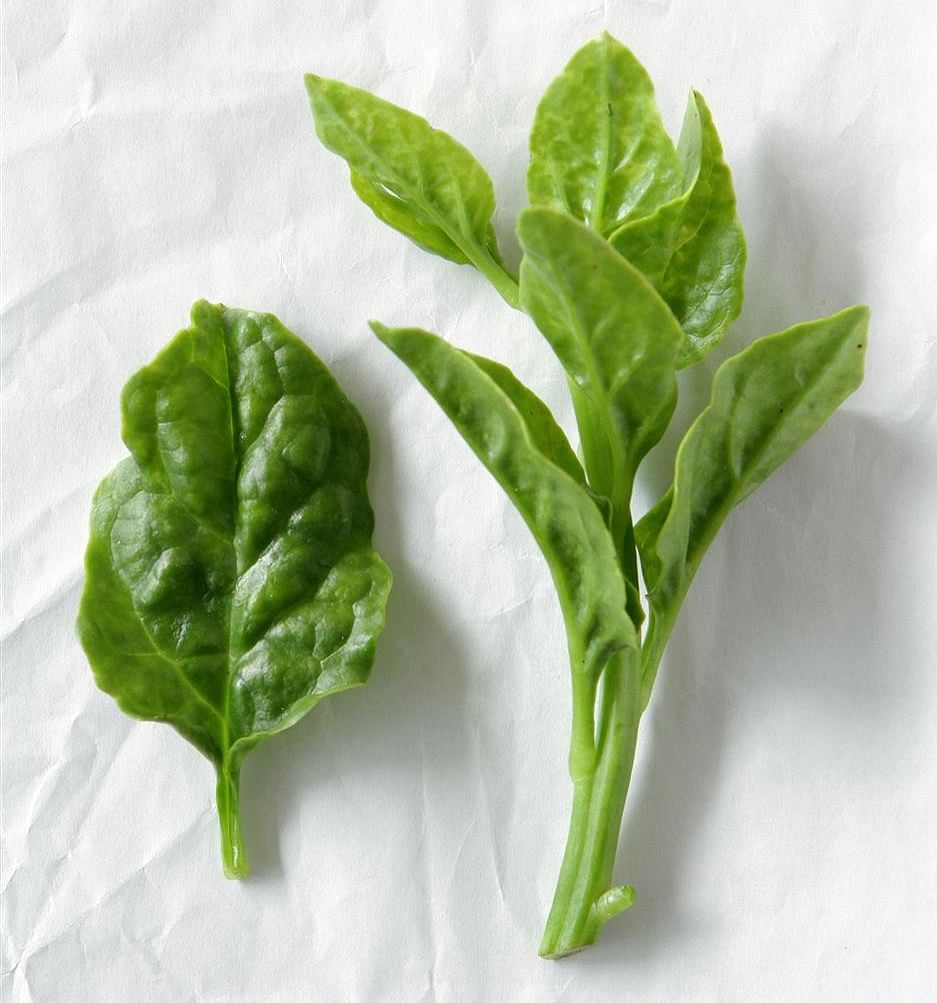
A vine plant, Malabar spinach is an easy-growing vegetable in our climate, since it loves the heat. You'll also find it called Ceylon or Vietnamese spinach, red vine spinach, or saan choy.
The two main types of Malabar spinach come with green stems (Basella alba) or red stems (Basella ruba); both have fleshy, thick leaves. When cooked, the semi-succulent leaves have a slightly gluey, mucilaginous texture (similar to that of ladies' fingers) which works particularly well in soups. In Chinese restaurants, it is often stir-fried as well, and it retains a gentle crunch when lightly cooked.
It is very popular in India, where it finds itself used across states, thickening curries - with jackfruit seeds in Karnataka cuisine, or yam in Andhra Pradesh. This vegetable is rich in vitamins A and C, iron and calcium, as well as antioxidants and soluble fibre.
Brazilian spinach
(Alternanthera sissoo)
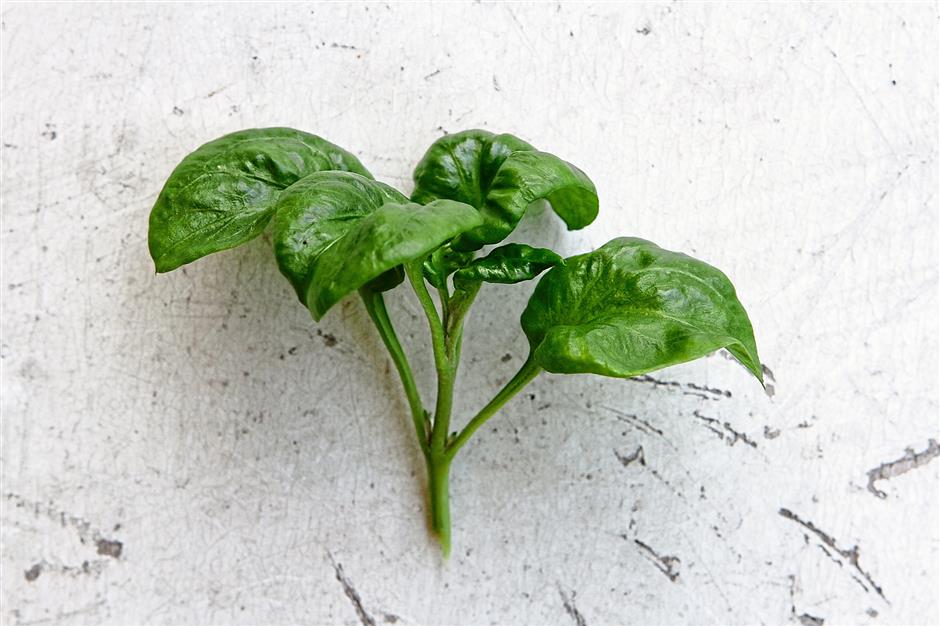
Also known as sissoo spinach, these gently ruffled leaves are from the Amaranthaceae family. They have a fresh, tender crunch, and no hint of the mucilaginous texture that can put some people off other kinds of "spinach". The stems are not eaten, just the leaves (newer leaves are more tender), and they're usually steamed or cooked in stir-fries or soups. They are also eaten raw - and are quite lemony and peppery - in salads in Brazil, but because of the oxalates (them again; we will get to them), if you are eating large amounts, you should cook them.
Brazilian spinach is easy to grow at home from cuttings, and seems to like hot, humid Malaysian weather quite a bit. It will thrive equally well in sunny and shady conditions, spreading out along the ground. And the crinkly, vibrant green leaves are very pretty too.
Surinam spinach
(Alinum triangulare)
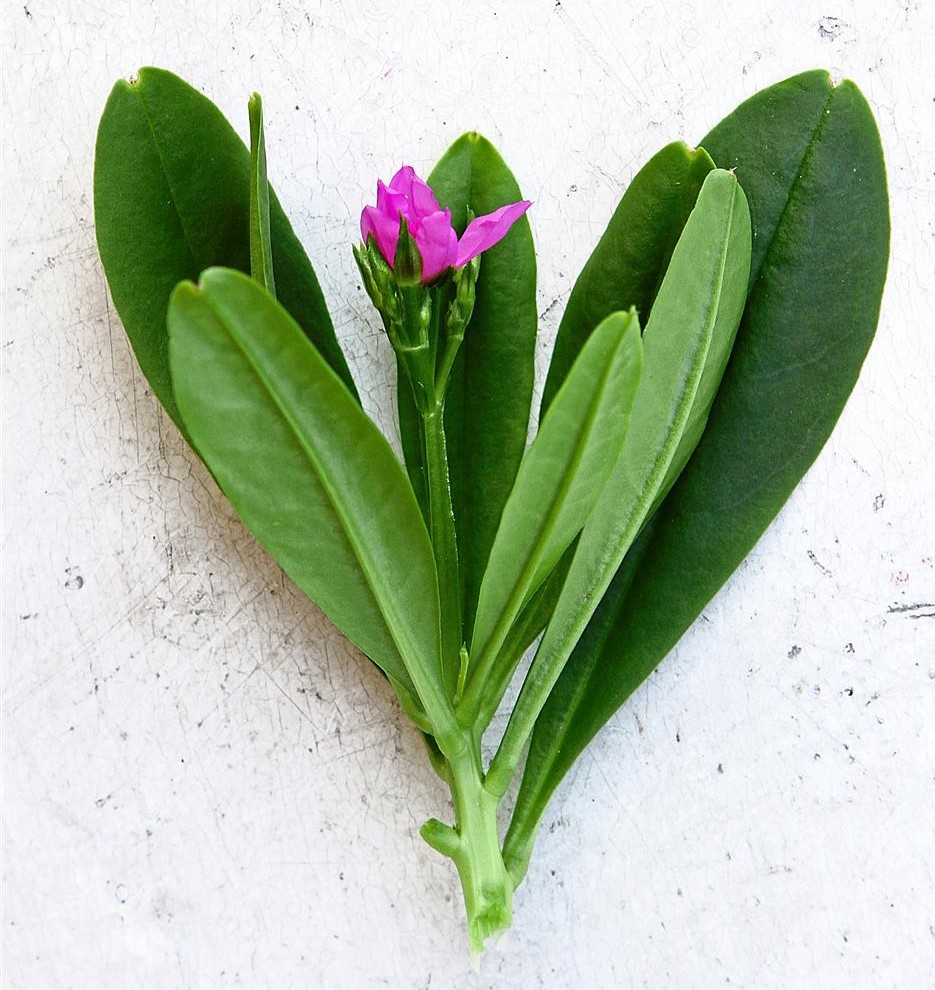
With elongated, crunchy leaves with a hint of peppery, citrus tang and pretty pink-purple flowers that can also be eaten, Surinam spinach would be an aesthetically pleasing addition to your kitchen garden.
You will also find this perennial, originally from South America, under the names waterleaf, Surinam purslane, Philippine spinach or Florida spinach.
As with its brethren, the tangy leaves are full of protein, vitamins A and C, iron and calcium.
Cook them lightly to maintain the nutrients.
Grow it from cuttings, in partial shade - whether in your vegetable garden or flower border.
Amaranth
(Amaranthus dubius, Amaranthus gangeticus, Amaranthus tricolor)
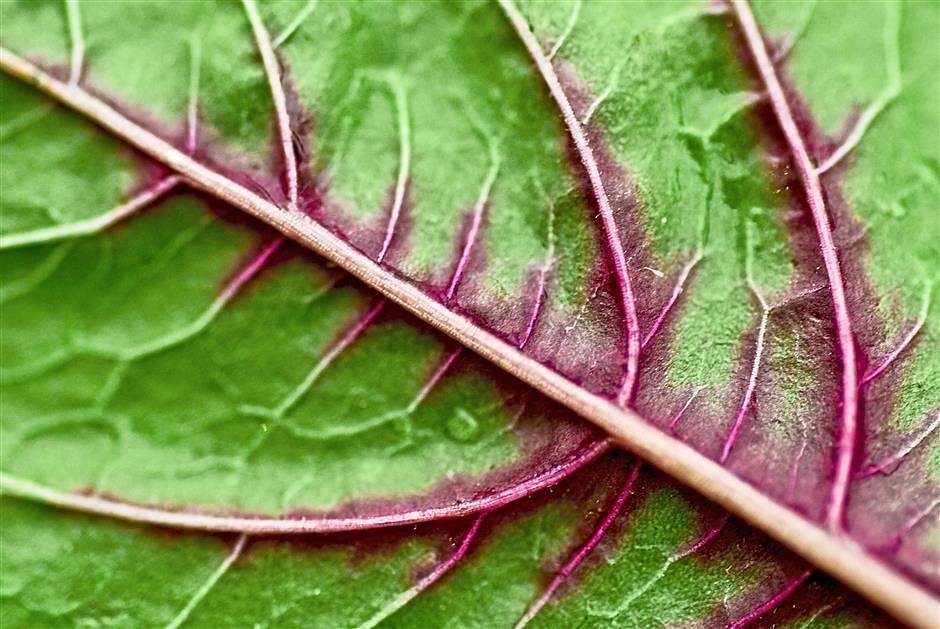
What you know as bayam merah or bayam hijau here is actually a kind of amaranth, rather than spinach. Spinach is also from the Amaranthacae family, but amaranth and spinach are from different genera - the genus of amaranth is Amaranthus, while the genus of spinach is Spinacia. This vegetable is also called een/en choy or Chinese spinach. Try the leaves stir-fried or lightly steamed.
Amaranth is easily grown here, as you can see from its easy availability in markets and supermarkets, but caterpillars do love to munch their way through the leaves.
The issue of oxalates
We come to the issue of oxalates. These are actually substances that naturally occur in the body, and play a role in our metabolism. Spinach, and the "fake" spinaches featured here - as with many other leafy plants - are also quite high in oxalates.
Oxalates become a problem if too much of them accumulate in the body - they tend to bind with substances like iron and calcium - which can mean that you miss out on absorbing those nutrients, and in the case of calcium, can cause kidney stones, if in excess.
So a couple of years ago, many health aficionados became concerned, and there was talk of avoiding spinach and other vegetables high in oxalates - rhubarb, for example - entirely.
But the keywords here are moderation and common sense.
As dietitian Goh Chui Hoong said: "The oxalate content of foods is usually not a major concern, unless you have specific health concerns such as hyperoxalouria (excessive urinary excretion of oxalates), high risk of kidney stones or some form of kidney failure."
According to her, the United States' National Institute for Occupational Safety and Health (Niosh) reported a lethal dose of 15mg to 30mg for humans.
"To put it simply, you would need to consume 2.5kg to 3.5kg spinach at one time, and this is highly underestimated because the oxalate content in spinach is not as bioavailable as the lethal dose quoted. So based on this, it is quite safe to consume spinach, any type for that matter," she said.
In light of how much good stuff there is in spinach, it is not just safe but desirable. There are also many who believe that cooking spinach reduces its oxalate content.
"The average balanced diet would have a mix of all kinds of different foods which means that we'd never be consuming the amount of spinach necessary to be toxic," said Ms Prabaharan. She advises rotating your vegetables and not just consuming spinach daily at every meal.
In the case of the non-absorption of iron: Spinach is a source of non-heme iron, which is found in vegetable sources. Non-heme iron is not as bioavailable to the body as the heme iron found in animal products, because of the oxalate which binds it.
However, cooking spinach can help unlock these iron absorption inhibitors and hence increase iron bioavailability. In other words, cooking spinach helps make its iron more available to your body.
And as mentioned, you can also consume spinach in tandem with vitamin C-rich food to increase iron absorption.
SURINAM SPINACH, HERBS & COCONUT CHUTNEY RICE PAPER ROLL WITH PINEAPPLE-CORIANDER PESTO
Makes 12
Ingredients
For the green coconut chutney:
3 kaffir lime leaves, sliced
1 lime, juice and zest
20g ginger, sliced
20g coriander leaves
50g green chilli, seeded
50g spring onion
8g palm sugar
60ml vegetable oil
150g freshly-grated coconut
Salt to taste
Ingredients
For the green coconut chutney:
3 kaffir lime leaves, sliced
1 lime, juice and zest
20g ginger, sliced
20g coriander leaves
50g green chilli, seeded
50g spring onion
8g palm sugar
60ml vegetable oil
150g freshly-grated coconut
Salt to taste
For the pineapple and coriander pesto:
1 bunch coriander
2 stalks spring onions
10g fresh ginger
60g pineapple
60g mirin
30g lemon or lime juice
Salt to taste
1 bunch coriander
2 stalks spring onions
10g fresh ginger
60g pineapple
60g mirin
30g lemon or lime juice
Salt to taste
For the spring rolls:
12 sheets Vietnamese rice paper
4 red baby radishes, sliced
12 daun kadok
1 cucumber, cut into thin batons
Surinam (or other) spinach leaves
mint leaves, laksa leaves, dill, Thai basil, sawtooth coriander, etc, to taste
70g toasted peanuts, chopped
12 stems kuchai (Chinese chive) flowers, cut to about 10cm strips
12 sheets Vietnamese rice paper
4 red baby radishes, sliced
12 daun kadok
1 cucumber, cut into thin batons
Surinam (or other) spinach leaves
mint leaves, laksa leaves, dill, Thai basil, sawtooth coriander, etc, to taste
70g toasted peanuts, chopped
12 stems kuchai (Chinese chive) flowers, cut to about 10cm strips
Method
1. To make coconut chutney: Combine all the ingredients, except grated coconut, and process in a blender. Combine with grated coconut and set aside.
2. To make pesto: Combine all the ingredients and process to a coarse paste.
3. To make spring rolls: Briefly dip rice paper in cold water to soften. Place on chopping board and pat dry. Arrange radish, daun kadok, spinach leaves and cucumber in the middle of the rice paper. Top with a tablespoon of coconut chutney and herbs. Roll up with a stem of kuchai flower. Serve with the pineapple and coriander pesto.
1. To make coconut chutney: Combine all the ingredients, except grated coconut, and process in a blender. Combine with grated coconut and set aside.
2. To make pesto: Combine all the ingredients and process to a coarse paste.
3. To make spring rolls: Briefly dip rice paper in cold water to soften. Place on chopping board and pat dry. Arrange radish, daun kadok, spinach leaves and cucumber in the middle of the rice paper. Top with a tablespoon of coconut chutney and herbs. Roll up with a stem of kuchai flower. Serve with the pineapple and coriander pesto.
BAKED BRAZILIAN SPINACH FISH CAKES WITH CHILLI LIME DRESSING
Ingredients
For the chilli lime dressing:
2 Tbs mirin
2 Tbs lime juice
1 green chilli padi, chopped
Fish sauce, to taste
Freshly ground pepper, to taste
For the spinach fish cakes:
250g mackerel (tenggiri) fillet, chopped
200g Brazilian (or other) spinach, wilted
160g cooked quinoa
1 green or jalapeño chilli, chopped
2 cloves garlic, chopped
4 kaffir lime leaves, finely shredded
1 bunch mint, shredded
1 bunch coriander leaves, shredded
2 spring onions, chopped
1 egg white
Salt and pepper to taste
Oil, for brushing
For the chilli lime dressing:
2 Tbs mirin
2 Tbs lime juice
1 green chilli padi, chopped
Fish sauce, to taste
Freshly ground pepper, to taste
For the spinach fish cakes:
250g mackerel (tenggiri) fillet, chopped
200g Brazilian (or other) spinach, wilted
160g cooked quinoa
1 green or jalapeño chilli, chopped
2 cloves garlic, chopped
4 kaffir lime leaves, finely shredded
1 bunch mint, shredded
1 bunch coriander leaves, shredded
2 spring onions, chopped
1 egg white
Salt and pepper to taste
Oil, for brushing
For the salad:
40g shredded cabbage
4 petals bunga kantan, julienned
Coriander leaves, ulam raja, Thai basil, laksa leaf (kesom) to taste
Romaine or butterhead lettuce leaves, to serve
Lime wedges, to serve
40g shredded cabbage
4 petals bunga kantan, julienned
Coriander leaves, ulam raja, Thai basil, laksa leaf (kesom) to taste
Romaine or butterhead lettuce leaves, to serve
Lime wedges, to serve
Method
1. To make chilli lime dressing: Place all the ingredients in a bowl and mix well. Set aside.
2. To make spinach fish cakes: Preheat oven to 220 deg C. Place all the ingredients, except oil, in an electric mixer fitted with a paddle attachment. Mix until well combined.
3. Divide and shape the mixture into patties. Place them on a baking tray lined with non-stick baking paper or a silicone mat. Brush both sides of the patties with oil. Bake for 8 minutes. Turn and cook for a further 8 minutes, or until golden and crisp.
4. To make salad: Place the cabbage and leaves in a bowl, and toss to combine.
5. To serve: Enjoy the fish cake in a lettuce leaf with some salad, drizzled with dressing and lime juice.
1. To make chilli lime dressing: Place all the ingredients in a bowl and mix well. Set aside.
2. To make spinach fish cakes: Preheat oven to 220 deg C. Place all the ingredients, except oil, in an electric mixer fitted with a paddle attachment. Mix until well combined.
3. Divide and shape the mixture into patties. Place them on a baking tray lined with non-stick baking paper or a silicone mat. Brush both sides of the patties with oil. Bake for 8 minutes. Turn and cook for a further 8 minutes, or until golden and crisp.
4. To make salad: Place the cabbage and leaves in a bowl, and toss to combine.
5. To serve: Enjoy the fish cake in a lettuce leaf with some salad, drizzled with dressing and lime juice.
MALABAR SPINACH, EGG AND BLUE CHEESE PIZZA
Makes 4 small pizzas
Ingredients
For the pizza dough:
250g bread flour
150g cold water
5g salt
2g instant dried yeast
25g olive oil
For the toppings:
140g Malabar (or other) spinach, wilted
2 garlic cloves, chopped
70g grated mozzarella
70g blue cheese, crumbled
80g UHT cream
Salt and pepper, to taste
4 small eggs, for topping
Ingredients
For the pizza dough:
250g bread flour
150g cold water
5g salt
2g instant dried yeast
25g olive oil
For the toppings:
140g Malabar (or other) spinach, wilted
2 garlic cloves, chopped
70g grated mozzarella
70g blue cheese, crumbled
80g UHT cream
Salt and pepper, to taste
4 small eggs, for topping
Method
1. To prepare the dough: Combine all the ingredients in a mixing bowl and knead for 5 minutes. Cover the mixing bowl with a cloth and set the dough aside to rest for 30 minutes. Punch the dough and proof for another 30 minutes.
2. Divide into four equal portions, form into balls and set aside in a bowl covered with a cloth, for 15 minutes.
3. To finish the pizza: Preheat the oven to 230°C. Combine all the topping ingredients and set aside.
4. Roll the pizza dough out to 15cm discs, then spread with some of the topping mixture, leaving a hole at the centre for the egg. Bake for 5 minutes, then reduce the temperature of the oven to 180 deg C.
5. Break each egg into a small dish, one at a time, discard a bit of egg white, and place in the centre of each pizza. Bake for a further 2 minutes and serve immediately.
1. To prepare the dough: Combine all the ingredients in a mixing bowl and knead for 5 minutes. Cover the mixing bowl with a cloth and set the dough aside to rest for 30 minutes. Punch the dough and proof for another 30 minutes.
2. Divide into four equal portions, form into balls and set aside in a bowl covered with a cloth, for 15 minutes.
3. To finish the pizza: Preheat the oven to 230°C. Combine all the topping ingredients and set aside.
4. Roll the pizza dough out to 15cm discs, then spread with some of the topping mixture, leaving a hole at the centre for the egg. Bake for 5 minutes, then reduce the temperature of the oven to 180 deg C.
5. Break each egg into a small dish, one at a time, discard a bit of egg white, and place in the centre of each pizza. Bake for a further 2 minutes and serve immediately.

